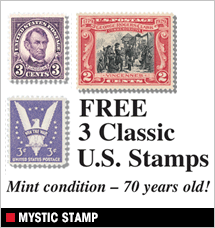
 Native Americans were the original ecologists and conservationists. They have always strived to live in harmony with the seasons and the land, to take only what was needed, and to thank every plant, animal, or thing that was used. They taught the newcomers in their land how to plant and use the plants in their area – some for food and others for medicine. The U.S. Constitution borrowed many principles from the Iroquois including the concept of balance of power. Most state museums devote a section to the Native Americans in their area.
Native Americans were the original ecologists and conservationists. They have always strived to live in harmony with the seasons and the land, to take only what was needed, and to thank every plant, animal, or thing that was used. They taught the newcomers in their land how to plant and use the plants in their area – some for food and others for medicine. The U.S. Constitution borrowed many principles from the Iroquois including the concept of balance of power. Most state museums devote a section to the Native Americans in their area.
- Mashantucket Pequot Museum & Research Center, Mashantucket, Connecticut: Step into the world of the Pequot. In this state-of-the-art, interactive museum, visitors walk through a three-dimensional route through 20,000 years of natural history and the history of Eastern Woodlands people, with a particular focus on the Pequots.
- National Museum of the American Indians, New York City and Washington D.C. The museums are part of the Smithsonian Institution, with one of the most extensive collections of Native American arts and artifacts in the world. Their permanent and special exhibits detail the diverse culture of the first Americans.
- Jamestown, Yorktown, Virginia: Explore the Powhatan way of life in a re-created village featuring reed-covered houses, crops and a ceremonial circle of carved wooden posts. Learn about the world of Pocahontas, daughter of Powhatan, powerful leader of 30-some Algonquian-speaking tribes in coastal Virginia.
- Museum of the Cherokee Indian, Cherokee, North Carolina: Learn about the “Trail of Tears” which was part of President Andrew Jackson’s Indian removal policy. The Cherokee were forced to leave their land and move to present-day Oklahoma. Over 4000 lost their lives on the 1000-mile journey.
- Lake Superior Chippewa, Lac du Flambeau, Wisconsin: The Chippewa moved into this area in 1745. The name refers to the practice of harvesting fish at night by torchlight. Of special interest is the government school where Chippewa children 5 to 15 were required to attend and had to abandon all their Native American ways.
- Montezuma’s Castle, Camp Verde, Arizona: The U.S. National Monument is one of the best preserved cliff dwellings of the ancestral Puebloans. Built between 1100 and 1425, the buildings were not a castle but more like a five-story apartment building that was actually built before the birth of Montezuma. The name comes from the first European settlers to the area.
- The Native American Heritage Center, Anchorage, Alaska: The Center has demonstrations, workshops and offers guided tours of the indoor and outdoor village sites. Activities include storytelling, native song and dance presentations, native games, and other activities to acquaint visitors with the native lifestyle and culture.
- Tillicum Village, Seattle, Washington: The village is a short boat ride across Puget Sound. Visitors are treated to a dinner and show. Over one million dollars was recently used to upgrade the site and create an experience that is not only sophisticated but respectful featuring high-technical effect and a master storyteller whose stories are acted out by dancers wearing traditional wooden masks.
- Little Big Horn, Crow Agency, Montana: Learn about one of America’s most famous (infamous) events when the U.S. 7th Cavalry under the leadership of Col. George Custer met the Sioux and Cheyenne in battle. It was one of the Native Americans’ last stands to preserve their land and culture.
- Gilcrease Museum, Osage Hills, Oklahoma: Only a few minutes from Tulsa is a museum with one of the world’s most comprehensive collection of art and artifacts dealing with Native Americans. Items include pre-contact artifacts and recent artwork defining the Native American culture.
Sandra Scott travels the globe recording the top attractions at every destination.
Copyright © 2024 Go60.us. All Rights Reserved.



























































